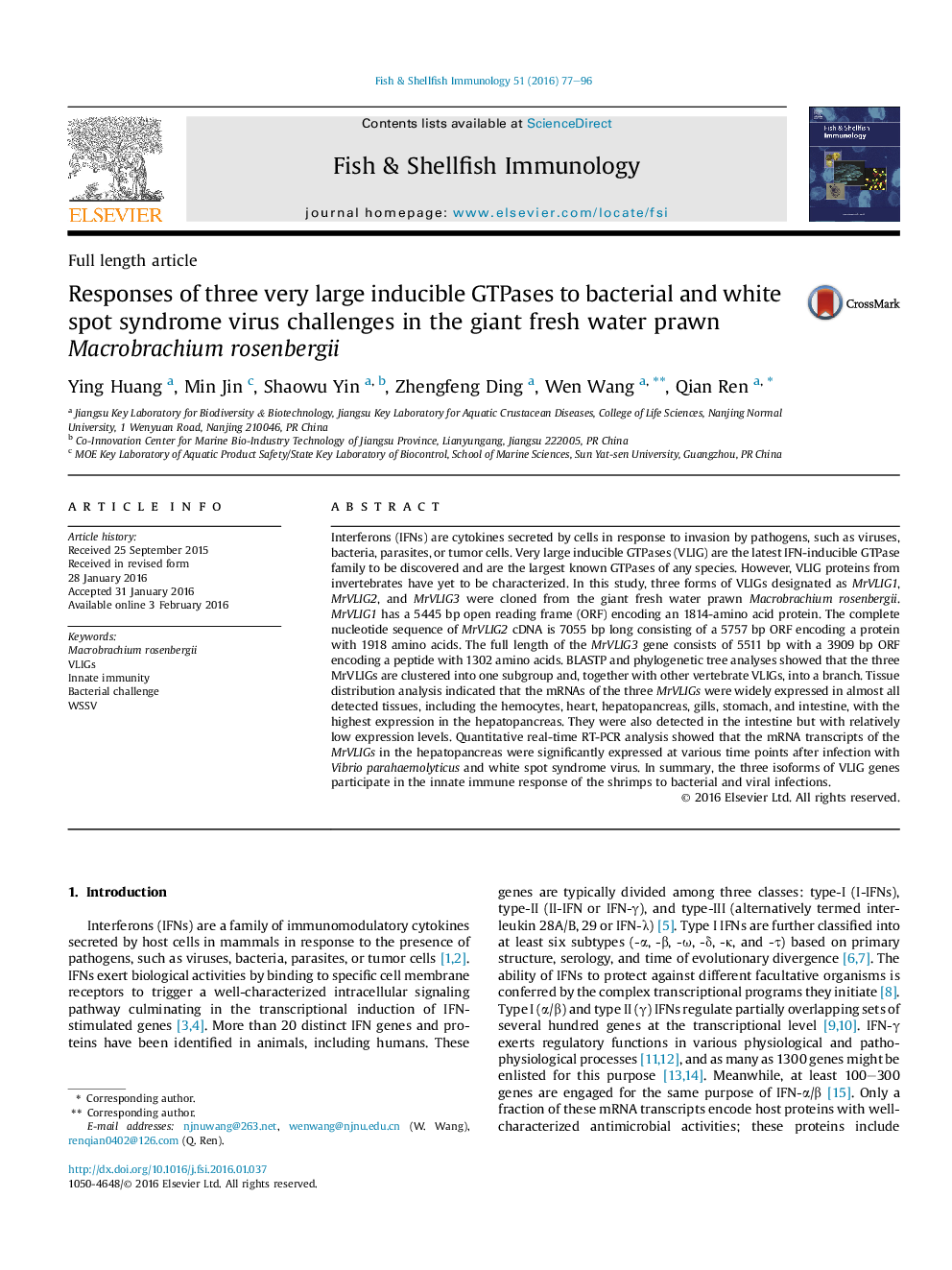| Article ID | Journal | Published Year | Pages | File Type |
|---|---|---|---|---|
| 2430716 | Fish & Shellfish Immunology | 2016 | 20 Pages |
•Three very large inducible GTPases were first identified from Macrobrachium rosenbergii.•Three MrVLIGs were mainly expressed in hepatopancreas and intestine.•Three MrVLIGs showed significant increase upon WSSV or Vibrio challenge.•Three MrVLIGs participate in innate immune response against bacteria and virus infecting the shrimps.
Interferons (IFNs) are cytokines secreted by cells in response to invasion by pathogens, such as viruses, bacteria, parasites, or tumor cells. Very large inducible GTPases (VLIG) are the latest IFN-inducible GTPase family to be discovered and are the largest known GTPases of any species. However, VLIG proteins from invertebrates have yet to be characterized. In this study, three forms of VLIGs designated as MrVLIG1, MrVLIG2, and MrVLIG3 were cloned from the giant fresh water prawn Macrobrachium rosenbergii. MrVLIG1 has a 5445 bp open reading frame (ORF) encoding an 1814-amino acid protein. The complete nucleotide sequence of MrVLIG2 cDNA is 7055 bp long consisting of a 5757 bp ORF encoding a protein with 1918 amino acids. The full length of the MrVLIG3 gene consists of 5511 bp with a 3909 bp ORF encoding a peptide with 1302 amino acids. BLASTP and phylogenetic tree analyses showed that the three MrVLIGs are clustered into one subgroup and, together with other vertebrate VLIGs, into a branch. Tissue distribution analysis indicated that the mRNAs of the three MrVLIGs were widely expressed in almost all detected tissues, including the hemocytes, heart, hepatopancreas, gills, stomach, and intestine, with the highest expression in the hepatopancreas. They were also detected in the intestine but with relatively low expression levels. Quantitative real-time RT-PCR analysis showed that the mRNA transcripts of the MrVLIGs in the hepatopancreas were significantly expressed at various time points after infection with Vibrio parahaemolyticus and white spot syndrome virus. In summary, the three isoforms of VLIG genes participate in the innate immune response of the shrimps to bacterial and viral infections.
